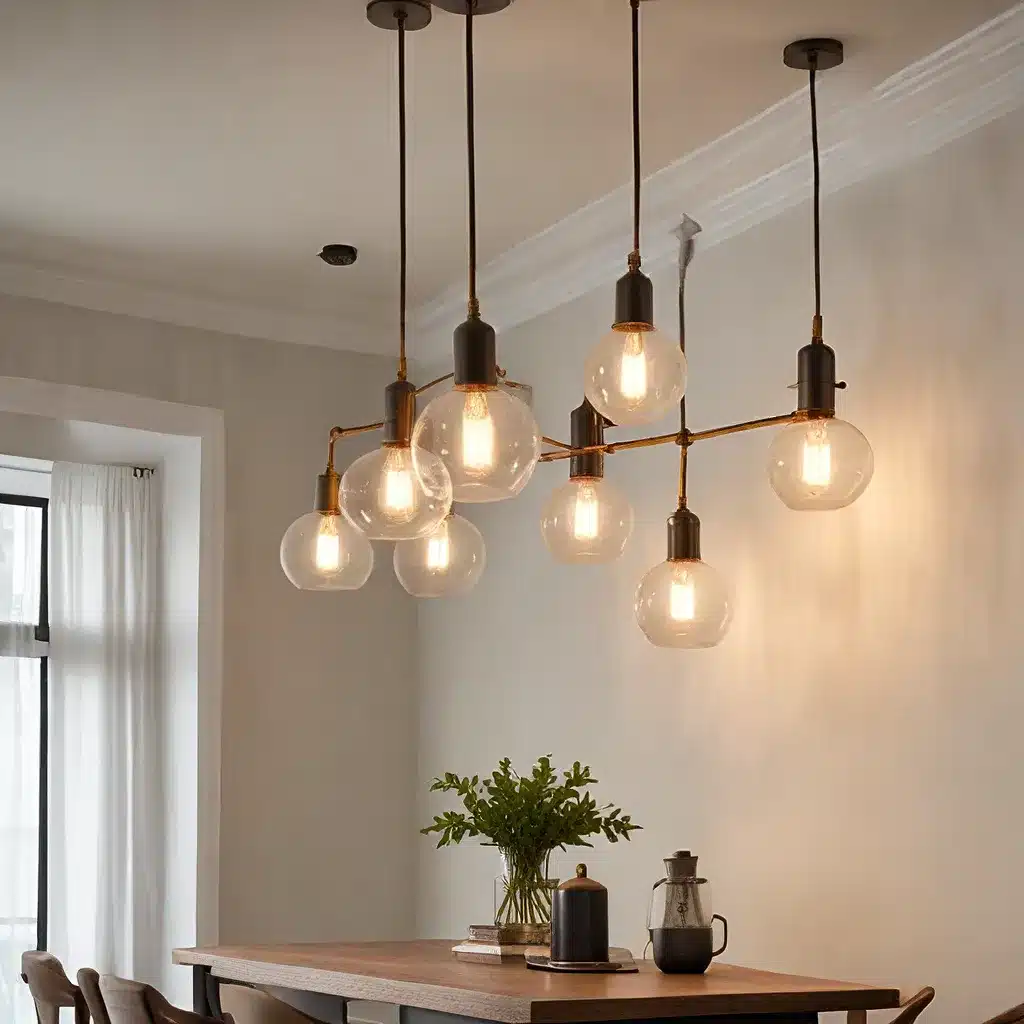
Creating a harmonious and visually appealing interior design is no easy feat. One essential element that often gets overlooked, yet can dramatically impact the overall aesthetic, is lighting. Proper lighting not only illuminates a space but also has the power to set the mood, highlight architectural features, and tie a room’s design together.
The Importance of Layered Lighting
Achieving a cohesive design aesthetic starts with understanding the importance of layered lighting. Contrary to the common misconception that a single overhead fixture is sufficient, the most visually captivating spaces incorporate a blend of ambient, task, and accent lighting.
Ambient lighting provides overall illumination, setting the tone for the room. Recessed lights, chandeliers, or flush-mount fixtures are perfect for this purpose. Task lighting, on the other hand, is designed to illuminate specific areas, such as walkways, patios, or workspaces. Lastly, accent lighting is used to highlight architectural features, artwork, or other design elements, creating visual interest and depth.
By thoughtfully layering these three types of lighting, you can elevate the overall aesthetic and ensure a cohesive flow throughout your home. This approach not only enhances the functionality of the space but also creates a sense of balance and harmony.
Selecting the Right Lighting Fixtures
Choosing the appropriate lighting fixtures is crucial for achieving a cohesive design aesthetic. When selecting fixtures, consider the overall style of your space, the size and scale of the room, and the desired mood or atmosphere.
For example, in a modern interior, sleek and minimalist pendant lights or recessed lighting may be the perfect choice, while a traditional space might benefit from the warm glow of antique-inspired chandeliers or sconces. Mixing and matching different fixture styles can also create a visually interesting and eclectic look, as long as the finishes and materials complement each other.
Pay close attention to the scale and proportion of your lighting fixtures. Oversized or undersized fixtures can throw off the balance of a room, making it feel disjointed or uncomfortable. Work with the dimensions of the space to ensure that each fixture is appropriately sized and positioned to create a cohesive visual harmony.
Mastering the Art of Mixed Metals
One of the biggest trends in interior design is the incorporation of mixed metals. By blending different metallic finishes, you can add depth, texture, and visual interest to your space, creating a timeless and sophisticated aesthetic.
When mixing metals, it’s important to understand the concept of warm and cool tones. Warm metals, such as gold, brass, and copper, have a reddish undertone, while cool metals, like chrome, nickel, and stainless steel, have a blueish cast. Pairing a warm metal with a cool metal can create a stunning contrast, while using multiple warm or cool tones can result in a more harmonious and cohesive look.
To achieve a well-executed mixed metal design, be mindful of the ratio and placement of each finish. Avoid using more than three different metals in a single room, and aim to have a dominant metal with accent metals that complement it. This will help maintain a sense of balance and ensure that the design doesn’t feel overwhelming or disjointed.
Incorporating Lighting into Your Overall Design
When it comes to integrating lighting into your overall design, it’s crucial to consider how the fixtures will interact with the other elements in the space. This includes furniture, decor, and even the room’s architectural features.
Choose lighting fixtures that complement the existing color palette, textures, and finishes in the room. For example, if your space has a rustic farmhouse vibe, wrought-iron or oil-rubbed bronze fixtures would be a perfect match, whereas a sleek, modern interior might call for brushed nickel or polished chrome.
Lighting can also be used to highlight specific design elements, such as architectural features, art, or sculptural pieces. By strategically placing accent lights, you can draw the eye to these focal points and create a sense of balance and visual interest throughout the space.
Remember, lighting is not just a functional necessity; it’s a powerful design tool that can transform the entire look and feel of a room. By incorporating layered lighting, selecting the right fixtures, and mastering the art of mixed metals, you can elevate your interior design and create a cohesive, visually stunning space.
Elevating Your Spaces with Professional Lighting Design
While DIY lighting projects can be rewarding, working with a professional interior designer or lighting specialist can take your design to the next level. These experts have the knowledge, expertise, and resources to help you maximize the impact of lighting in your home.
Interior designers can assess the unique needs and challenges of your space, develop a tailored lighting plan, and ensure that the fixtures are strategically placed to achieve your desired aesthetic. They can also provide valuable insights into the latest trends, energy-efficient solutions, and innovative lighting technologies.
By collaborating with a professional, you can elevate the overall design, enhance the functionality of your space, and create a truly cohesive and luxurious environment that reflects your personal style and vision.
Remember, lighting is not just an afterthought; it’s a crucial element in creating a harmonious and visually appealing interior. By mastering the art of layered lighting, selecting the right fixtures, and incorporating mixed metals, you can transform your home into a sanctuary that radiates style and sophistication.

